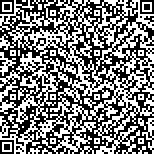Research on Severe Convective Cloud Identificationby Using AMSUB Microwave Data
- Article
- Figures
- Metrics
- Preview PDF
- Reference
- Related
- Cited by
- Materials
Abstract:
Microwave remote sensing has a unique ability to penetrate the clouds and get th e distribution of ice. The brightness temperatures of the AMSUB three channels near to the water vapor absorption line have high sensitivity to frozen hydrome teors in convective cloud systems. As the ice contents ascend, the brightness te mperatures descend due to the ice scattering attenuation. Especially, the brightness temperature differences between the three channels ar e suggested as a criterion to detect the deep convective clouds. Based on the simulation of the influence of the water vapor, cloud and precipita tion particles on the three microwave brightness temperatures, and by analyzing the convective synoptic process occurred on 12 August 2005, the relationship bet ween the brightness temperatures and the convective intensity is studied. Furthe rmore, a measurable method is developed to estimate and identify the deep convec tive clouds and convective overshooting. This method is employed to investigate some typical convective systems. The results show that the convective cloud iden tified by AMSUB data well corresponds to the precipitation area, and even the convective overshooting region corresponds to the overshooting clouds structure.
Keywords:
Project Supported:
Clc Number:


Mobile website









